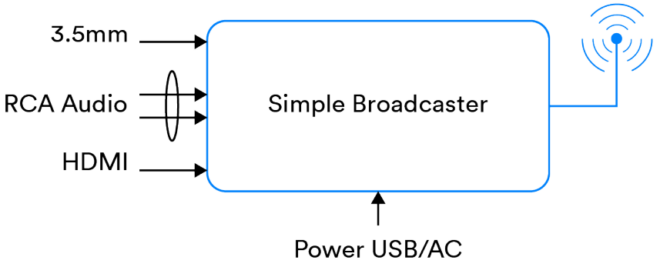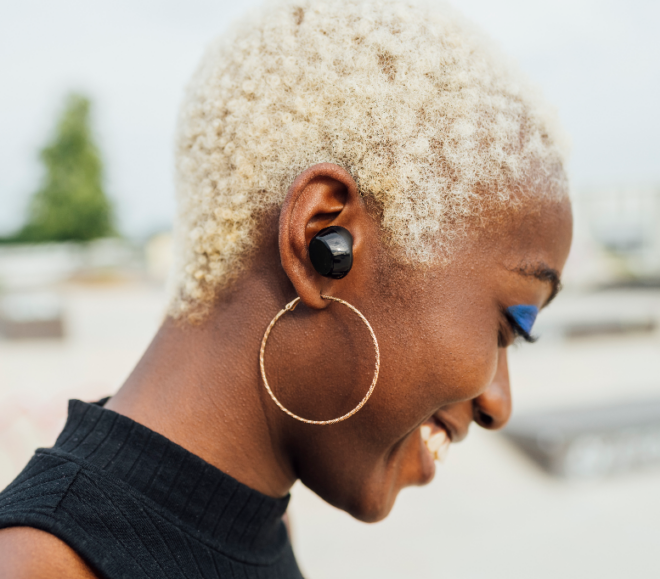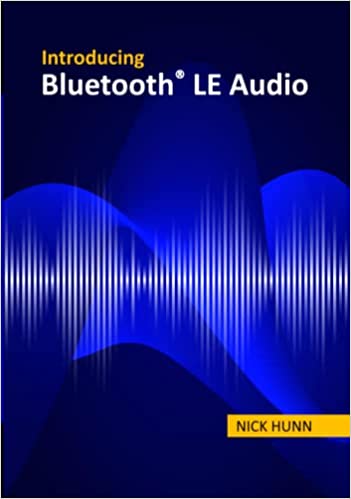Audio has long been home court for Bluetooth® technology. Earlier in the year, forecasts showed that annual shipments of Bluetooth audio devices are expected to grow 1.4 times between 2022 and 2026. More recent predictions indicate that there will be 3 billion annual Bluetooth LE Audio device shipments by 2027, suggesting a rapid adoption.
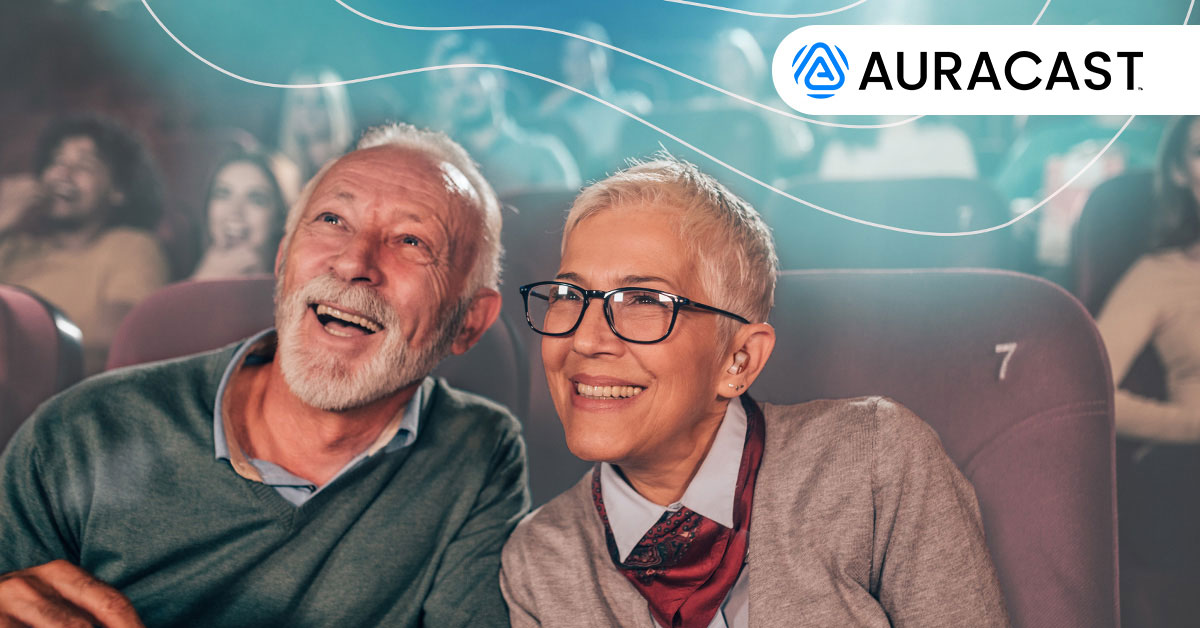
Bluetooth LE Audio is a revolutionary innovation in Bluetooth® technology. On top of upgrading performance with lower latency, lower power consumption, and higher sound quality, Bluetooth LE Audio also adds additional broadcast audio capabilities to bring consumers a more extensive and creative wireless audio experience. In the first half of this year, the Bluetooth Special Interest Group (SIG) released a new audio capability, Auracast™ broadcast audio. It not only enables one-to-many personal audio sharing on the consumer side, but it can also be applied in airports, shopping malls, cinemas, and other public venues to enhance the way people engage with their surroundings.
As Bluetooth® audio continues to advance in quality and functionality, more integrations of the new Bluetooth LE Audio standard within products are steadily taking place with an increasing number of application solutions emerging. Nordic Semiconductor actively embraces this new era of wireless audio by continuing to explore and lead innovation in Bluetooth LE Audio products and solutions to bring cutting-edge Bluetooth audio technology to the market.
Recently, I had a chance to talk with Finn Boetius, product marketing engineer for Nordic Semiconductor. He shared insight into Nordic’s plans for Bluetooth LE Audio product and solution implementation as well as future development strategies.
Q&A With Finn Boetius From Nordic Semiconductor
What products and solutions has Nordic Semiconductor developed using Bluetooth LE Audio?
Nordic Semiconductor has a proven track record in designing energy-efficient wireless SoCs (system-on-chip) and has taken this even further with the nRF5340’s dual processor architecture. One of the application processors is optimized to deliver high performance and addresses wireless connectivity together with the other processor that is optimized for low power consumption to easily meet demands for high computing power. As a result, the SoC offers the ideal combination of low power consumption and high performance to meet the needs of Bluetooth LE Audio.
To complement the SoC and simplify the development workflow, Nordic Semiconductor released a development kit that contains everything needed for Bluetooth LE Audio projects. It is available in several configurations, e.g., as an earbud or broadcast receiver or in true wireless stereo (TWS) applications. For most use cases, such as wireless headsets, designers require two or more development kits for the headset and the audio source respectively.
The above SoCs and development kits developed by Nordic Semiconductor have helped several device manufacturers, including Sennheiser, one of the world’s leading audio brands, to bring the best Bluetooth LE Audio and Auracast™ devices to market.
![]()
ON-DEMAND WEBINAR
What Product Developers & Public Locations Need to Know About Auracast™ Broadcast Audio
Watch this discussion on how Auracast™ broadcast audio will introduce new opportunities for wireless audio developers and allow public locations to enhance their visitor satisfaction while increasing audio accessibility for all.
What market challenges have these solutions addressed?
Nordic Semiconductor has developed solutions that lay a solid foundation for wireless audio transmission applications. Use cases include true wireless stereo (TWS) applications, such as earbuds and headsets, as well as more specialized audio products like hearing aids. Bluetooth LE Audio products have significantly higher sound quality in wireless audio at almost half of the power used in Bluetooth® Classic Audio, thus doubling the playback from the same batteries.
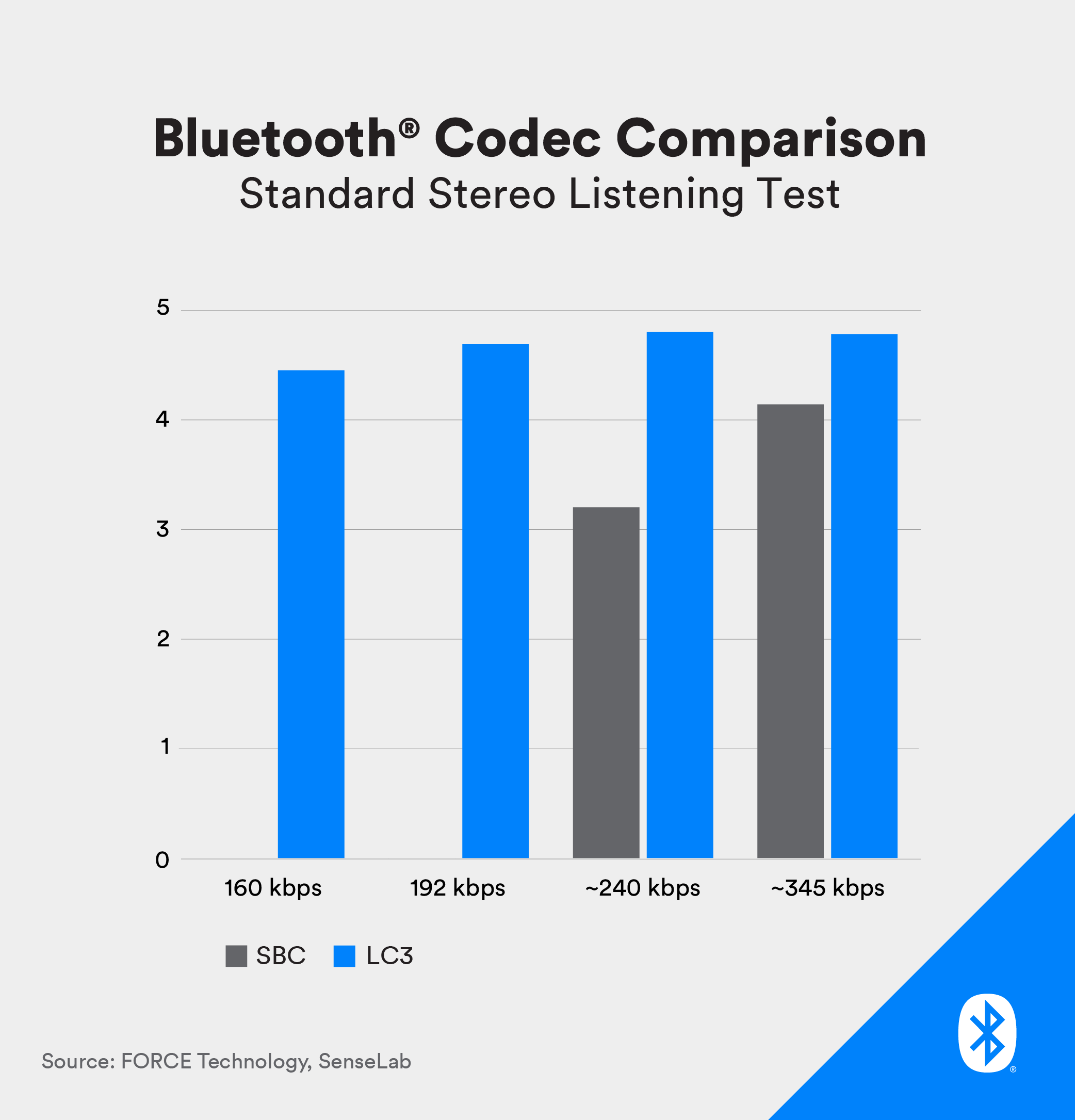
Key to this performance is the LC3, Bluetooth LE Audio’s Low-Complexity Communication Codec, one of the most advanced audio codecs available today. It offers tremendous flexibility, covering everything from voice to high-quality audio. By supporting sample rates of 8, 16, 24, 32, 44.1, and 48 kHz and sample resolutions of 16, 24, and 32 bits, LC3 can encode speech and music at various bitrates. This flexibility in bitrate allows developers to trade-off sound quality with power consumption to extend battery life or reduce battery size.
Moreover, extensive listening tests by the Bluetooth SIG have shown that LC3 offers better audio quality than previous Bluetooth audio codecs at all sample rates, providing equal or better audio quality at half the bitrate.
Among Bluetooth LE Audio’s many features, its broadcast mode allows one or more audio streams to be broadcasted to an unlimited number of end devices. With Nordic Semiconductor’s range extender, audio can be wirelessly transmitted over distances of up to one kilometer.
Other applications include terminal devices that can broadcast audio from a normally muted public screen to a receiver in public venues such as gyms or enable live translation into several different languages at the same time in a conference room or cinema. Bluetooth LE Audio will also support a new generation of assistive listening systems.
What are the most promising features for Auracast™ broadcast audio and Bluetooth LE Audio?
Nordic Semiconductor was involved in the development of the Auracast™ standard from the beginning. We were so impressed with Auracast™ broadcast audio’s potential that we designed the nRF5340 SoC for all Auracast™ roles. We included several useful audio features in this SoC, including those with capabilities to better synchronize audio streams and transfer audio data. nRF5340 Audio DK supports developments using all Auracast™ features.
There are obvious use cases like broadcasting and sharing audio from mobile phones, tablets, and TVs, as well as headphones and earbuds, but everybody has those in mind.
“I am impressed with the potential of Bluetooth® LE Audio to provide improved audio quality and longer battery.”
Another area where Auracast™ broadcast audio has potential is in audio induction loop replacement in public places. Auracast™ broadcast audio can transmit audio to multiple devices at the same time, which can be useful for providing audio information in public places such as museums, airports, or train stations. There are a lot of very interesting broadcasting use cases. I hope we will see some truly innovative products in this segment.
The most promising new use cases for BluetoothLE Audio are those that require low-power consumption and low-latency audio streaming. One of the most impressive features of Bluetooth LE Audio is its ability to support multiple audio streams, which makes it well-suited for group listening and conference call applications. .
Additionally, Bluetooth LE Audio is designed to work well with hearing aids, which can provide improved sound quality and longer battery life.
Overall, I am impressed with the potential of Bluetooth LE Audio to provide improved audio quality and longer battery life while still being able to support multiple audio streams and connect to a variety of devices, which makes it a versatile technology for different use cases. The potential of Bluetooth LE Audio to replace audio induction loops in public places is also a niche but interesting use case for this technology.
What new Bluetooth LE Audio-based developments will Nordic Semiconductor explore in the future?
Nordic Semiconductor already supports all Bluetooth LE Audio features and roles and provides hardware, software, firmware, and development tools to facilitate product design. We will continue to work with our customers to bring Bluetooth LE Audio and Auracast™ broadcast audio products to market.

FEATURED INNOVATION
Auracast™ Broadcast Audio
Auracast™ broadcast audio will deliver life-changing audio experiences that will enhance the way you engage with others and the world around you.
Bluetooth®技術にとって、オーディオは常に事業上の中心であり、ホームグラウンドであり続けています。昨年、Bluetooth対応のオーディオ機器の年間出荷台数が2022年から2026年の間に1.4倍になるとの予測が発表されました。さらに最近の予測では、2027年にLE Audio機器の年間出荷台数が30億台に達するとされ、急速な普及が見込まれています。

LE Audioは、Bluetooth技術の中でも革命的です。低遅延・低消費電力・高音質の性能向上に加えてブロードキャストオーディオ機能も追加されたLE Audioは、消費者がより幅広く創造的にワイヤレスオーディオを楽しむことを可能にします。昨年上半期に、Bluetooth SIG(Special Interest Group)は新しいオーディオ機能Auracast™ ブロードキャスト オーディオを発表しました。ユーザー間で1対多のオーディオ共有ができるほか、空港・ショッピングセンター・映画館をはじめとする公共の場で活用し、人々と周囲の環境とのより充実した関わりを実現できます。
Bluetooth®オーディオが質・機能ともに進化を続けるにつれ、各種製品におけるLE Audio規格の採用は着実に進み、活用方法もますます増えています。ノルディック・セミコンダクターはこのワイヤレスオーディオの新時代を積極的に受け入れ、LE Audioの製品・ソリューションに関する探求を続け、革新の先頭に立って最先端のBluetooth技術を市場に届けています。
先日、ノルディック・セミコンダクターのプロダクトマーケティングエンジニアであるフィン・ボエチウス(Finn Boetius)氏にお話を伺う機会がありました。同社の製品やソリューションへのLE Audio実装に関する計画と、今後の開発戦略について語っていただきました。
ノルディック・セミコンダクターのフィン・ボエチウス氏とのQ&A
ノルディック・セミコンダクターでは、LE Audioを使用してどのような製品やソリューションを開発していますか。
ノルディック・セミコンダクターにはエネルギー効率に優れた無線SoC (system-on-chip)の設計に関する確かな実績があり、nRF5340のデュアルプロセッサアーキテクチャによってさらなる前進を遂げました。アプリケーションプロセッサの一つは高性能の発揮に最適化され、もう一つは消費電力低減に最適化されています。それらを組み合わせて無線通信を行うことにより、必要とされる高い演算能力に容易に応えられます。それによりnRF5340は、LE Audioのニーズに合った低消費電力と高性能という理想的な組み合わせを提供できるのです。
SoCを補完して開発ワークフローの簡素化を図るものとして、当社ではLE Audioを用いたプロジェクトに必要なすべてを含む、開発キットも発売しています。キットは、イヤホンやブロードキャスト受信器、TWS(完全ワイヤレスステレオ)用途など、いくつかの構成を用意しています。ワイヤレスヘッドセットなど大部分のユースケースにおいて、設計には、ヘッドセットとオーディオ音源のそれぞれに使用するため複数の開発キットが必要となります。
ノルディック・セミコンダクターが開発した先述のSoCや開発キットは、世界的なオーディオトップブランドのひとつであるゼンハイザーをはじめ、いくつかのデバイスメーカーにおいて、LE AudioやAuracast™の最高品質デバイスを市場に届けるため役立てられています。
これらのソリューションはどのような市場課題に対応してきましたか。
ノルディック・セミコンダクターは、ワイヤレスオーディオ伝送アプリケーションに強固な基盤を提供するソリューションを開発してきました。ユースケースとしてはイヤホンやヘッドセットなどのTWSのほか、補聴器などのより特定の用途のオーディオ製品もあります。LE Audio製品はワイヤレスオーディオの音質を大幅に向上させながら、消費電力はBluetooth® Classic Audioの約半分であるため、同じ電池でも再生時間は倍増します。

こうした性能の鍵を握るのが、LE AudioのコーデックであるLC3(Low-Complexity Communication Codec)で、今日ある数々のオーディオコーデックの最先端です。極めて柔軟性が高く、人の声から高音質のオーディオまであらゆるものに対応します。LC3は8 kHz、16 kHz、24 kHz、32 kHz、44.1 kHz、48 kHzのサンプルレートと、16bit、24bit、32bitのビット深度に対応し、音声や音楽を様々なビットレートでエンコードできます。このビットレートの柔軟性により、開発者は音質より低消費電力を優先し、バッテリーの駆動時間延長や小型化を図ることが可能になります。
さらに、Bluetooth SIGによる広範なリスニングテストでは、すべてのサンプルレートにおいて、LC3がBluetoothの従来のオーディオコーデックよりも高音質を提供し、半分のビットレートで同等またはより優れた音質を実現することが示されました。
LE Audioの数多くの機能の中でも、ブロードキャストモードが可能にするのは、1つまたは複数のオーディオストリームを無数のエンドデバイスに向けたブロードキャストです。ノルディック・セミコンダクターのレンジエクステンダーを使用することにより、オーディオは最大1キロの距離まで無線で届けられます。
他の用途には、スポーツジムなど公共の場で通常は消音されている画面の音声を受信器にブロードキャストするデバイスや、会議室や映画館などでの即時通訳に対する複数多言語での同時配信などがあります。また、LE Audioは新世代の聴覚補助システムにも対応しています。
Auracast™ ブロードキャスト オーディオとLE Audioの最も有望な機能は何ですか。
ノルディック・セミコンダクターはAuracast™の規格策定に開始当初から関与していました。当社はAuracast™ ブロードキャスト オーディオのポテンシャルに感銘を受け、SoC のnRF5340はAuracast™の全ロールに対応するよう開発しました。このSoCには有益なオーディオ機能がいくつか盛り込まれており、例えばオーディオストリームの同期の改善やオーディオデータ伝送の向上が図れます。nRF5340 Audio DKはAuracast™全機能について、開発に対応しています。
誰もが思い描くものですが、明らかなユースケースとしては、携帯電話やタブレット、TVからのブロードキャスト配信やオーディオシェアリング、またヘッドホンやイヤホンが挙げられます。
Auracast™ ブロードキャスト オーディオの活用が期待できる領域として、公共の場での磁気誘導ループシステムに代替する使用方法があります。Auracast™ ブロードキャスト オーディオは複数のデバイスに同時に音声を届けることができ、美術館、空港、駅など公共の場での音声情報の提供に役立つ可能性があります。ブロードキャスト機能のユースケースには大変興味深いものが多くあり、この分野で真に革新的な製品が現れることを願っています。
LE Audioの新しいユースケースでは、低消費電力と低遅延のオーディオストリーミングを要するものが最も有望です。LE Audioの最もすばらしい特長の一つは、複数のオーディオストリームに対応できる機能です。このため、LE Audioはグループでの視聴や電話会議での使用に最適です。
また、LE Audioは補聴器での使用にも適した設計がされており、音質の向上とバッテリー稼働時間の延長が期待できます。
全体として、LE Audioのポテンシャルには大きな期待を感じます。高音質と長いバッテリー稼働時間を実現する一方で、複数のオーディオストリームへの対応と、多種多様なデバイスとの接続が可能となっており、様々なユースケースを可能にする多才な技術です。また公共の場での磁気誘導ループシステムに代替可能なポテンシャルも、ニッチではありますが、興味深いユースケースです。
今後、ノルディック・セミコンダクターではLE Audioをベースにどのような開発を進めていく予定ですか。
ノルディック・セミコンダクターでは既にLE Audioの全機能およびロールに対応しており、製品設計を円滑に進めるためのハードウェア、ソフトウェア、ファームウェア、開発ツールを提供しています。今後もお客様と協力し、LE AudioおよびAuracast™ ブロードキャスト オーディオ製品を市場に送り出していく予定です。

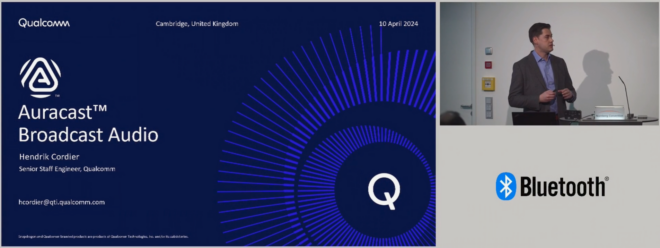

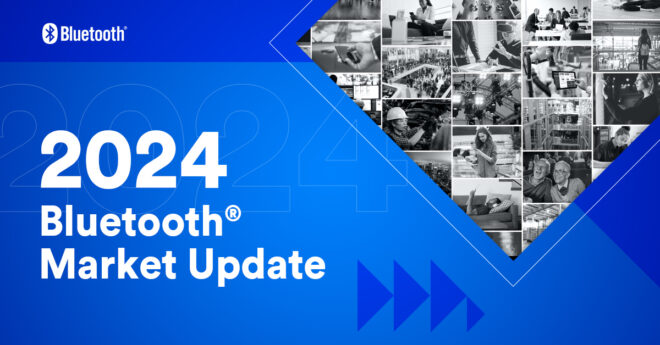

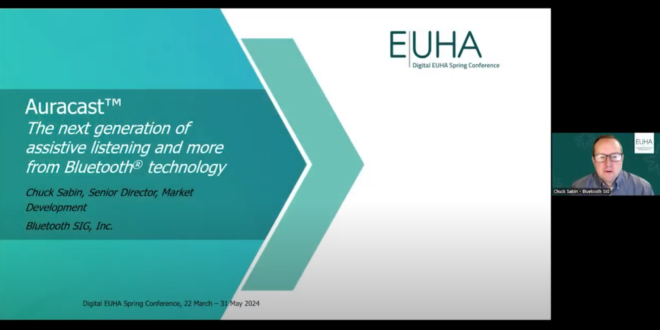
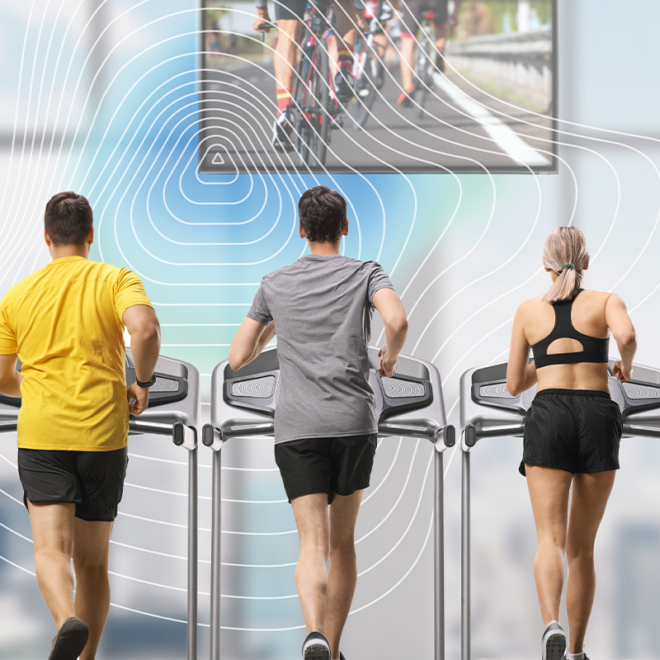

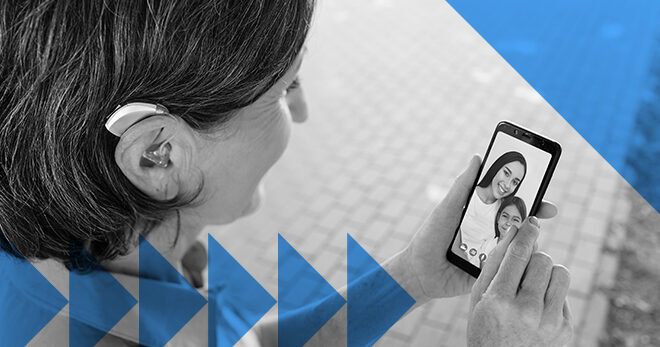
![packetcraft logo tagline[1]](https://www.bluetooth.com/wp-content/uploads/2024/03/packetcraft_logo_tagline1.png)
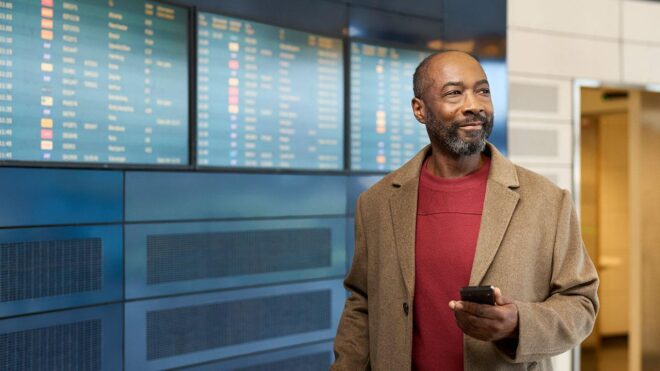
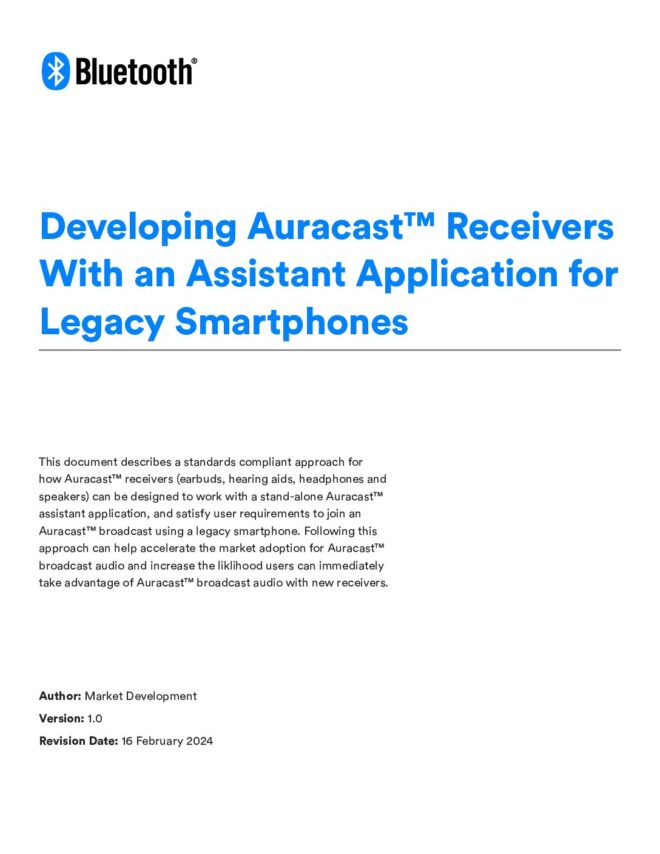
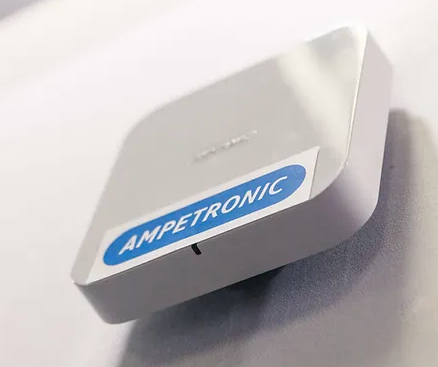
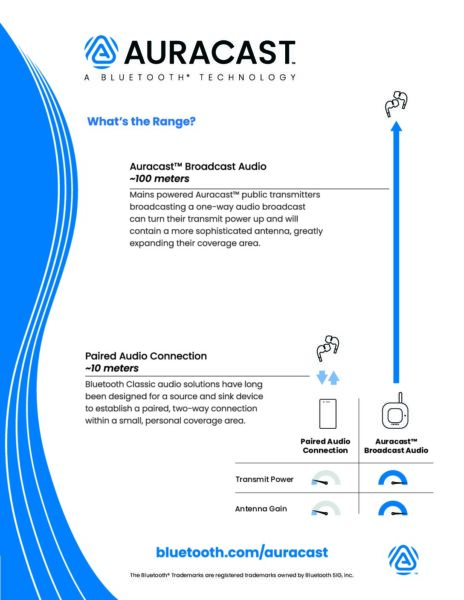
![2312 CES Handout Images FINAL existing pdf 464x600[1]](https://www.bluetooth.com/wp-content/uploads/2024/01/2312_CES_Handout-Images_FINAL-existing-pdf-464x6001-1.jpg)
![2312 CES Handout Images FINAL unlimited pdf 464x600[1]](https://www.bluetooth.com/wp-content/uploads/2024/01/2312_CES_Handout-Images_FINAL-unlimited-pdf-464x6001-1.jpg)
